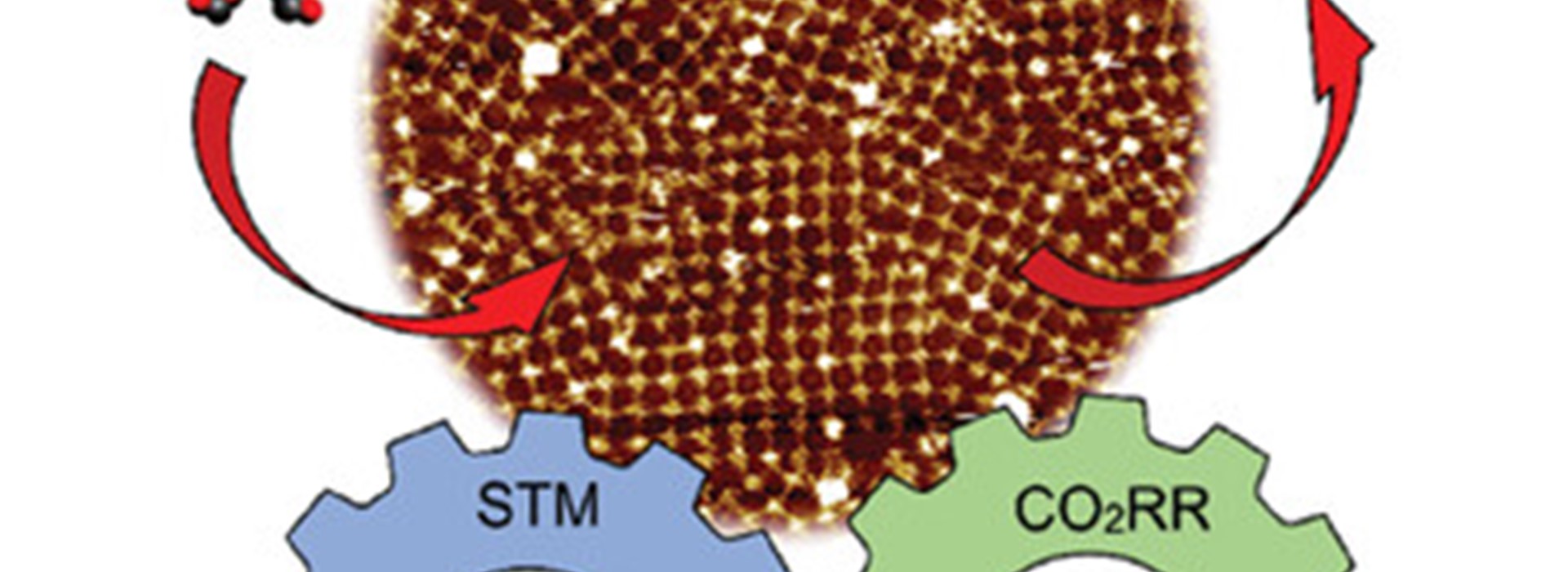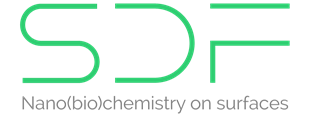2D covalent organic framework targeting CO2 reduction

The reduction of carbon dioxide (CO2) using porphyrin-containing 2D covalent organic frameworks (2D-COFs) catalysts is widely explored nowadays. While these framework materials are normally fabricated as powders followed by their uncontrolled surface heterogenization or directly grown as thin films (thickness >200 nm), very little is known about the performance of substrate-supported single-layered (≈0.5 nm thickness) 2D-COFs films (s2D-COFs) due to its highly challenging synthesis and characterization protocols. In this work, a fast and straightforward fabrication method of porphyrin-containing s2D-COFs is demonstrated, which allows their extensive high-resolution visualization via scanning tunneling microscopy (STM) in liquid conditions with the support of STM simulations. The as-prepared single-layered film is then employed as a cathode for the electrochemical reduction of CO2. Fe porphyrin-containing s2D-COF@graphite used as a single-layered heterogeneous catalyst provided moderate-to-high carbon monoxide selectivity (82%) and partial CO current density (5.1 mA cm−2). This work establishes the value of using single-layered films as heterogeneous catalysts and demonstrates the possibility of achieving high performance in CO2 reduction even with extremely low catalyst loadings.
Read more in Advanced Energy Materials.
To enable comments sign up for a Disqus account and enter your Disqus shortname in the Articulate node settings.


